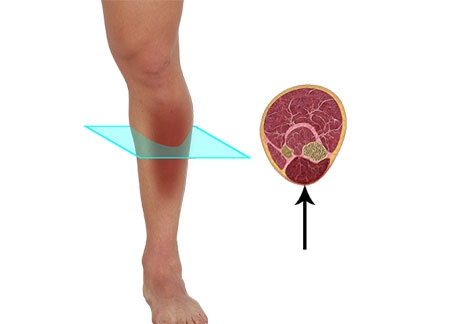One of the lesser known conditions in the orthopaedic world is compartment syndrome and,understandably so, because it is relatively rare.However, it also requires immediate medical attention due to the potential for irreparable damage if left untreated.
Compartment syndrome is usually the result of an injury that leads to uncontrolled swelling of an extremity. This increased pressure in turn causes soft tissue (namely muscle) and nerve damage because blood flow to and from an extremityis compromised. This scenario most often occurs in the lower leg, but could happen in other areas of the body as well. Two different kinds of compartment syndrome exist: acute and chronic (also known as exertional).
Acute compartment syndrome is an emergent situation that happens after injury or trauma when swelling overwhelms an area of the body. This swelling is the result of bleeding from the injured tissue and edema that accumulates from the body's natural inflammatory response. If the swelling cannot be controlled and too much pressure develops, the muscle in the involved extremity is at risk of dying due to inadequate blood supply.This condition could be worsened by casts or splints being applied too tightly or a compression wrap being applied too long, but is most often caused by trauma such as a tibia fracture.The condition can be accelerated by alack of ice and elevation. And sometimes, despite our best efforts, compartment syndrome rearsits ugly head.
Prevention of acute compartment syndrome involves diligent efforts at swelling control after injury or surgery. Additionally, if any casts, splints,or compression stockings are present, they will need to be removed because they can essentially act as a tourniquet on the affected body part. If these conservative measures are insufficient at alleviating the pressure build-up in the extremity, an emergency fasciotomy is necessary to release the pressure. A fasciotomy involves a long incision through the fascia that releases the pressure surrounding the muscles by creating more space. Sometimes an incisional vacuum is used to help close the incision and prevent bacterial growth. A compressive dressing may also be applied to prevent swelling from returning. This surgery can save the limb from lasting effects such as muscle weakness or drop foot.
Exertional compartment syndrome, on the other hand,is a chronic issue that occurs when swelling builds up in an extremity, but only after increased activity. The activity is usually repetitive and high impact in nature, such as running.This fluid collection then dissipates again with rest, ice, and elevation, and does not re-occur until the activity is resumed. This condition can be diagnosed by using a machine to test the pressure in a specific compartment after a patient has been active to the point that their symptoms present. Here at OAW, patients being tested for exertional compartment syndrome are taken down to our PT department to spend some time on the treadmill prior to coming back to their exam room for compartment testing.The pressure reading will allow the physician to know if exertional compartment syndrome is present. This is not a pathology that requires immediate treatment. Rather, a non-emergent fasciotomy can help alleviate symptoms for patients who want to continue to be active without the associated symptoms. In specific circumstances,gait training may be used prior to surgical intervention to see if adjusting a runner’s gait pattern alleviates the pressure.
We certainly don’t wish any kind of compartment syndrome on anyone and do everything in our power to prevent it from happening. Rest assured,if acute compartment syndrome ever becomes an issue, we will waste no time in taking action so you can get back on the road to recovery. If you find that you struggle with pain in your extremities after increased activity, call us for an appointment today!
This blog is written by one of our very own-Morgan.She is a certified athletic trainer working as a medical assistant with our providers each and every day in our clinic. She obtained a bachelor's degree in athletic training from Carroll University in Waukesha and a master's degree in Kinesiology from Michigan State University.

